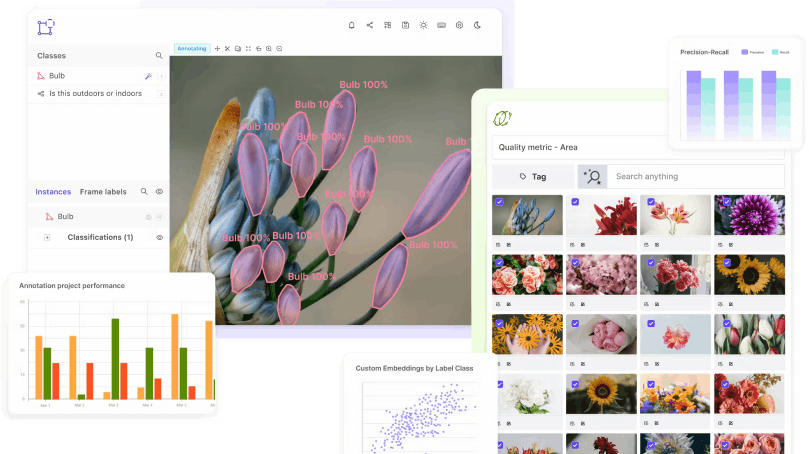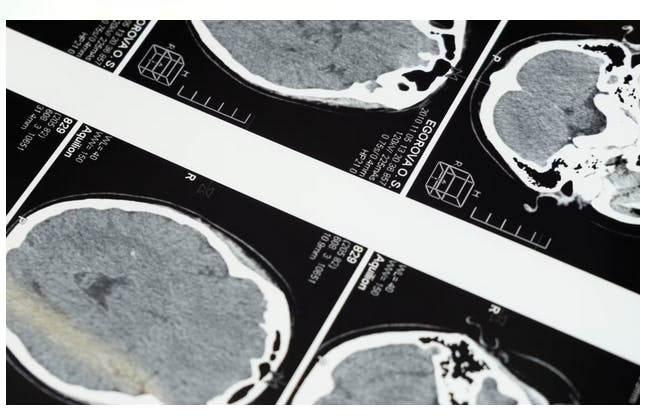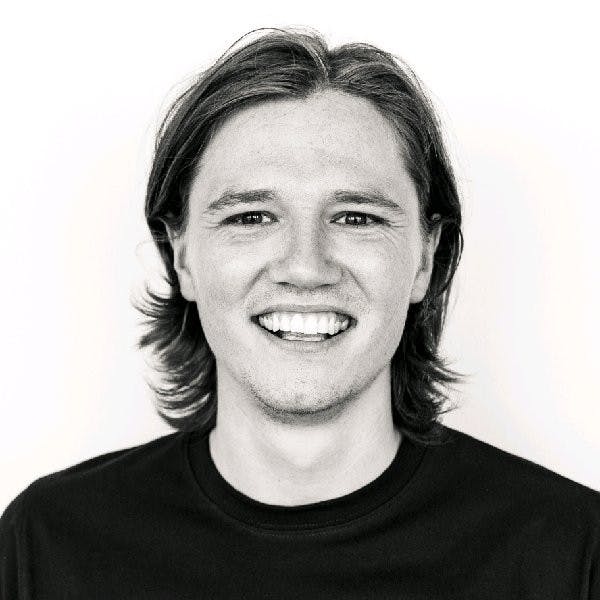Contents
What Is Human in the Loop (HITL)?
How Does Human-in-the-loop Work?
Active Learning vs. Human-In-The-Loop
How Does HITL Improve Machine Learning Outcomes?
Are There Drawbacks to This Type of Workflow?
Examples of Human-in-the-Loop AI Training
A Human-in-the-Loop Platform for Computer Vision Models
Encord Blog
Human-in-the-Loop Machine Learning (HITL) Explained

Human-in-the-Loop (HITL) is a transformative approach in AI development that combines human expertise with machine learning to create smarter, more accurate models. Whether you're training a computer vision system or optimizing machine learning workflows, this guide will show you how HITL improves outcomes, addresses challenges, and accelerates success in real-world applications.
In machine learning and computer vision training, Human-in-the-Loop (HITL) is a concept whereby humans play an interactive and iterative role in a model's development. To create and deploy most machine learning models, humans are needed to curate and annotate the data before it is fed back to the AI. The interaction is key for the model to learn and function successfully.
Human annotators, data scientists, and data operations teams always play a role. They collect, supply, and annotate the necessary data. However, how the amount of input differs depends on how involved human teams are in the training and development of a computer vision model.
What Is Human in the Loop (HITL)?
Human-in-the-loop (HITL) is an iterative feedback process whereby a human (or team) interacts with an algorithmically-generated system, such as computer vision (CV), machine learning (ML), or artificial intelligence (AI).

Every time a human provides feedback, a computer vision model updates and adjusts its view of the world. The more collaborative and effective the feedback, the quicker a model updates, producing more accurate results from the datasets provided in the training process.
In the same way, a parent guides a child’s development, explaining that cats go “meow meow” and dogs go “woof woof” until a child understands the difference between a cat and a dog.
 Here's a way to create human-in-the-loop workflows in Encord.
Here's a way to create human-in-the-loop workflows in Encord. How Does Human-in-the-loop Work?
Human-in-the-loop aims to achieve what neither an algorithm nor a human can manage by themselves. Especially when training an algorithm, such as a computer vision model, it’s often helpful for human annotators or data scientists to provide feedback so the models gets a clearer understanding of what it’s being shown.
In most cases, human-in-the-loop processes can be deployed in either supervised or unsupervised learning.
In supervised learning, HITL model development, annotators or data scientists give a computer vision model labeled and annotated datasets.

HITL inputs then allow the model to map new classifications for unlabeled data, filling in the gaps at a far greater volume with higher accuracy than a human team could. Human-in-the-loop improves the accuracy and outputs from this process, ensuring a computer vision model learns faster and more successfully than without human intervention.
In unsupervised learning, a computer vision model is given largely unlabeled datasets, forcing them to learn how to structure and label the images or videos accordingly. HITL inputs are usually more extensive, falling under a deep learning exercise category.
Active Learning vs. Human-In-The-Loop
Active learning and human-in-the-loop are similar in many ways, and both play an important role in training computer vision and other algorithmically-generated models. Yes, they are compatible, and you can use both approaches in the same project.
However, the main difference is that the human-in-the-loop approach is broader, encompassing everything from active learning to labeling datasets and providing continuous feedback to the algorithmic model.
How Does HITL Improve Machine Learning Outcomes?
The overall aim of human-in-the-loop inputs and feedback is to improve machine-learning outcomes.
With continuous human feedback and inputs, the idea is to make a machine learning or computer vision model smarter. With constant human help, the model produces better results, improving accuracy and identifying objects in images or videos more confidently.
In time, a model is trained more effectively, producing the results that project leaders need, thanks to human-in-the-loop feedback. This way, ML algorithms are more effectively trained, tested, tuned, and validated.
Are There Drawbacks to This Type of Workflow?
Although there are many advantages to human-in-the-loop systems, there are drawbacks too.
Using HITL processes can be slow and cumbersome, while AI-based systems can make mistakes, and so can humans. You might find that a human error goes unnoticed and then unintentionally negatively impacts a model's performance and outputs. Humans can’t work as quickly as computer vision models.
Hence the need to bring machines onboard to annotate datasets. However, once you’ve got people more deeply involved in the training process for machine learning models, it can take more time than it would if humans weren’t as involved.

Examples of Human-in-the-Loop AI Training
One example is in the medical field, with healthcare-based image and video datasets. A 2018 Stanford study found that AI models performed better with human-in-the-loop inputs and feedback compared to when an AI model worked unsupervised or when human data scientists worked on the same datasets without automated AI-based support.
Humans and machines work better and produce better outcomes together. The medical sector is only one of many examples whereby human-in-the-loop ML models are used.

When undergoing quality control and assurance checks for critical vehicle or airplane components, an automated, AI-based system is useful; however, for peace of mind, having human oversight is essential.
Human-in-the-loop inputs are valuable whenever datasets are rare and a model is being fed. Such as a dataset containing a rare language or artifacts. ML models may not have enough data to draw from; human inputs are invaluable for training algorithmically-generated models.
A Human-in-the-Loop Platform for Computer Vision Models
With the right tools and platform, you can get a computer vision model to production faster.
Encord is one such platform, a collaborative, active learning suite of solutions for computer vision that can also be used for human-in-the-loop (HITL) processes.
With AI-assisted labeling, model training, and diagnostics, you can use Encord to provide the perfect ready-to-use platform for a HITL team, making accelerating computer vision model training and development easier. Collaborative active learning is at the core of what makes human-in-the-loop (HITL) processes so effective when training computer vision models. This is why it’s smart to have the right platform at your disposal to make this whole process smoother and more effective.
We also have Encord Active, an open-source computer vision toolkit, and an Annotator Training Module that will help teams when implementing human-in-the-loop iterative training processes.
At Encord, our active learning platform for computer vision is used by a wide range of sectors - including healthcare, manufacturing, utilities, and smart cities - to annotate human pose estimation videos and accelerate their computer vision model development.
Encord is a comprehensive AI-assisted platform for collaboratively annotating data, orchestrating active learning pipelines, fixing dataset errors, and diagnosing model errors & biases. Try it for free today.

Explore our products
- Human-in-the-loop (HITL) is an iterative feedback process whereby a human (or team) interacts with an algorithmically-generated model. Providing ongoing feedback improves a model's predictive output ability, accuracy, and training outcomes.
- Human-in-the-loop data annotation is the process of employing human annotators to label datasets. Naturally, this is widespread, with numerous AI-based tools helping to automate and accelerate the process. However, HITL annotation takes human inputs to the next level, usually in the form of quality control or assurance feedback loops before and after datasets are fed into a computer vision model.
- Human-in-the-loop optimization is simply another name for the process whereby human teams and data specialists provide continuous feedback to optimize and improve the outcomes and outputs from computer vision and other ML/AI-based models.
- Almost any AI project can benefit from human-in-the-loop workflows, including computer vision, sentiment analysis, NLP, deep learning, machine learning, and numerous others. HITL teams are usually integral to either the data annotation part of the process or play more of a role in training an algorithmic model.
- Yes, HITL can be implemented post-deployment to continuously improve model performance. For example, human feedback can refine predictions or outputs when the model encounters new, unexpected data in real-world scenarios.
- Annotation: Platforms for labeling and reviewing datasets. Active learning: Algorithms that identify where human intervention is needed. Collaboration: Workflow management systems to streamline human and machine interactions.
- HITL supports ethical AI by involving humans in decision-making, ensuring that models are trained and used responsibly. This approach helps identify potential ethical concerns, such as discriminatory behavior, before a model is deployed.
- Improved model accuracy over iterations. Reduction in error rates for specific tasks. Time and cost savings compared to fully manual annotation or development.
- Corrective feedback on errors or misclassifications. Label refinement or additional context for ambiguous data. Identification of edge cases not handled by the model.





